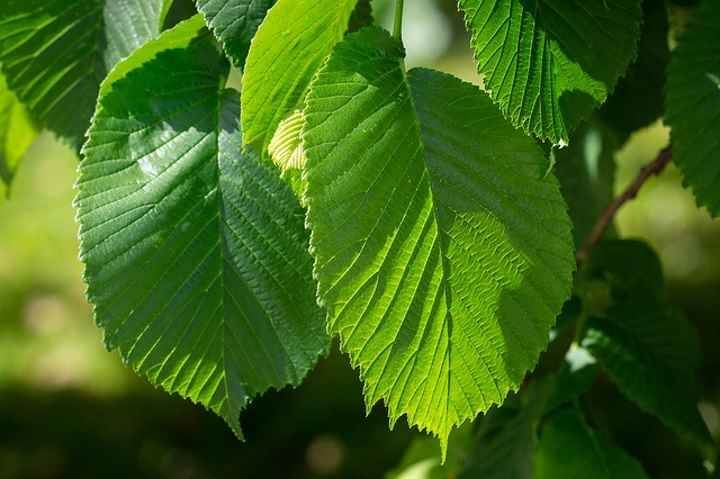Elm trees, towering members of the Ulmus genus, are renowned for their statuesque presence and distinctive characteristics.
These deciduous trees are easily recognizable by their rough, saw-edged leaves and their unique ability to propagate through root suckers.
In various mythologies, the elm symbolizes victory and the achievement of lofty goals. Spiritually, it’s often associated with the profound cycle of life, death, and rebirth.
Elm trees often grace the landscapes of thriller and fantasy films, their dramatic forms adding a sense of mystique and wonder.
Each elm tree has unique features, making it a fascinating subject for casual observers and avid gardeners.
Our goal is to guide you through the various elm tree types, ensuring you find the perfect species with ease and understanding.
Elm Trees Identification Guide
To properly identify an elm tree, four key factors must be considered: the leaves, bark, trunk, and height.
Elm Leaves
Elm leaves typically exhibit an oval shape and a cross-section pattern with a serrated edge.
The texture of these leaves varies, usually presenting a smooth upper surface and a rougher underside.
For instance, the leaves of the American Elm are notably elongated and pointed and can grow anywhere from 10 to 14 cm in length.
Elm Barks
Detailed furrows, sharp scales, and pronounced openings characterize the bark of an elm tree.
While the bark’s color generally ranges from brown to gray, some elm species may exhibit a reddish-brown hue. This distinct bark texture is a key element in elm tree identification.
Elm Trunk
One distinguishing feature of elm trees is their trunk structure.
Unlike other trees with a single, vertical trunk, elms often develop multiple trunks that split from the main one.
This characteristic is particularly noticeable in fully grown specimens.
Height of an Elm Tree
Elm trees can reach impressive heights, varying from 60 to 150 feet, depending on the species.
Equally remarkable is their width, which can extend up to 60 feet, underscoring their potential for substantial growth.
Wildlife and Elm Trees
Another aspect aiding in identifying elm trees is the wildlife they attract.
Species such as possums, squirrels, woodpeckers, and raccoons are often found near elms, drawn by the leaves or the samaras – the winged fruit these trees produce.
Types of Elm Trees
1. American Elm Tree (Ulmus Americana)
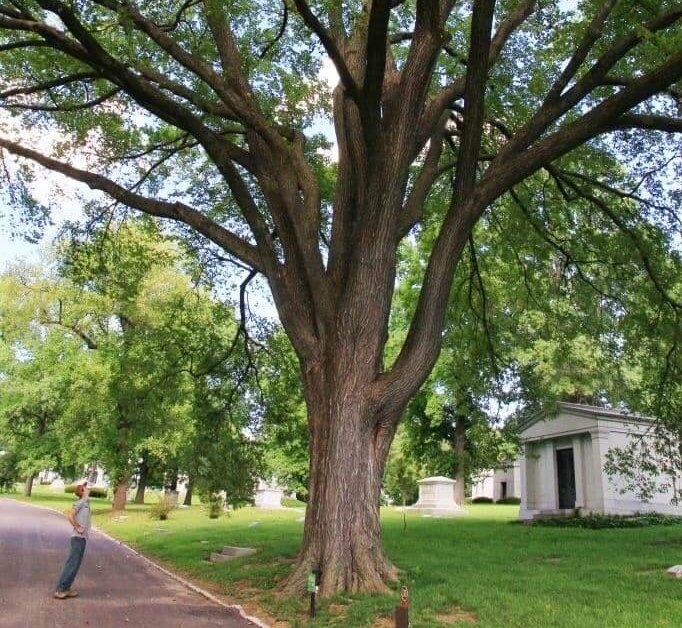
The American Elm, also known as the white elm or water elm, is a majestic species crucial in elm tree identification.
Growing up to 100 feet, these trees were historically favored for their fountain-like, royal appearance.
Characterized by their large, umbrella-like canopy, American Elms were once the quintessential shade tree.
However, they are susceptible to phloem necrosis and Dutch elm disease.
Identifiable by their unique, oval, double-serrated leaves and deep brown-gray bark, they are resilient against harsh winters, thriving with six hours of daily sunlight.
2. Cedar Elm Tree (Ulmus Crassifolia)
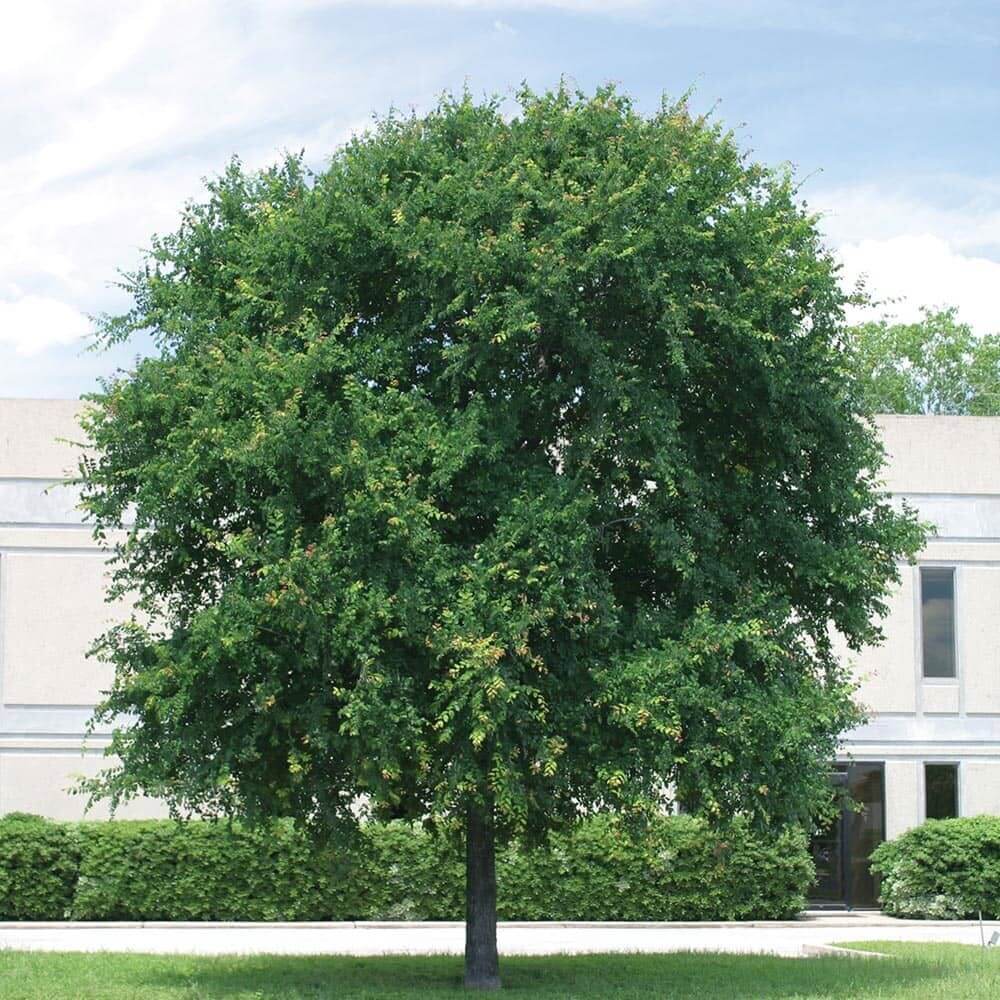
Native to North and Central America, the Cedar Elm, or basket elm, is notable in elm tree identification.
It flourishes best in flat valley bottoms, up to 27 meters, with a rounded crown. Its bark is predominantly gray, with a narrow, opened trunk.
The leaves of the Cedar Elm are smaller, with an oblique base measuring 2.5 to 5cm in length and 1.3 to 2cm in width.
The tree is adorned with reddish-purple flowers in early winter, making it a popular choice in regions like Texas.
3. Cherry Bark Elm Tree (Ulmus Villosa)
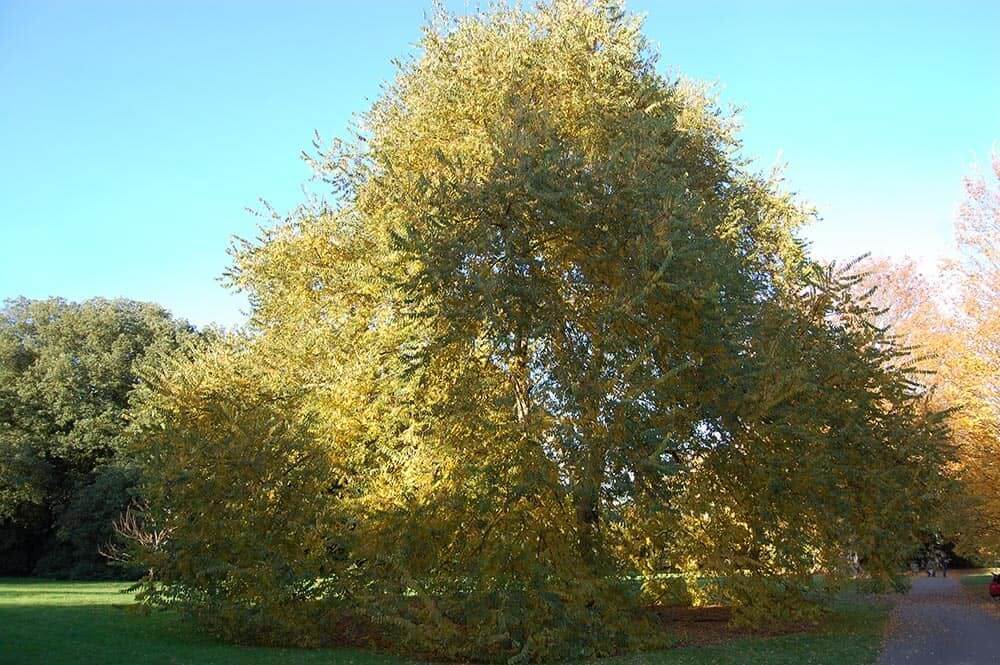
Known as Marn Elm, the Cherry Bark Elm stands out among Asiatic Elms, easily identifiable in Kashmir’s valleys at 1200 to 2500 meters.
Growing up to 30 meters, it has a smooth, distinctive bark and loosely hanging branches.
Its bark is sometimes used medicinally for its anti-inflammatory properties.
The leaves are bright green, oval, and rough on the edges. In spring, the tree features densely clustered purple samaras, 12 mm long, with white hair coverings.
4. David Elm Tree (Ulmus Davidiana)
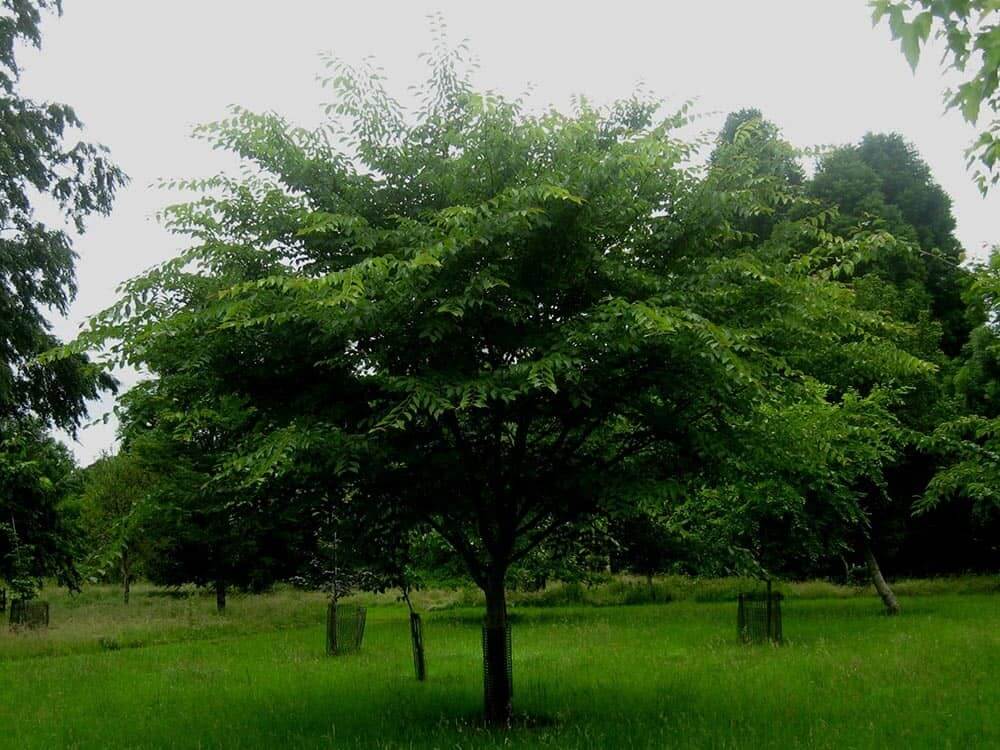
The David Elm, or Father David Elm, is a smaller yet significant species in elm tree identification.
It is distributed across East Asia and found in wetlands near waterfalls at elevations of 2000 to 2300 meters.
Similar to American Elms but shorter, growing up to 50 to 60 feet. These elms provide good shade due to their dense canopy, which can be achieved at a mature phase.
Their leaves are elliptical, initially red, turning to green, with a rough texture and a slender, grayish trunk.
5. English Elm Tree (Ulmus Minor ‘Atinia’)
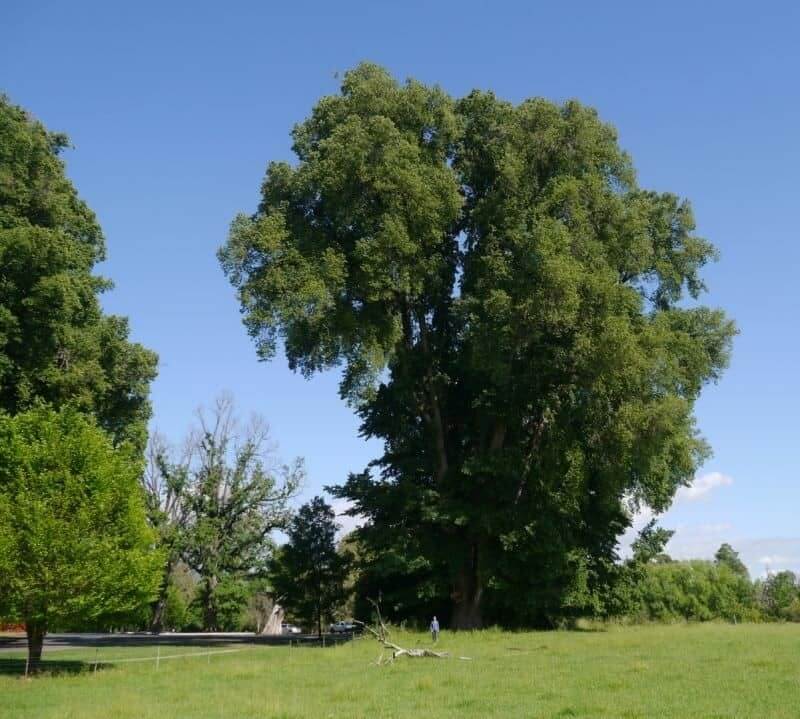
The English Elm, or common elm, is a rapidly growing species found primarily in central southern England and is blessed with a life span of 100 years.
Capable of reaching 135 feet, it is distinguished by its grayish-brown bark with deep, rough openings and trunks growing up to 8 feet in diameter.
The leaves are hairy, toothed, and dark green, growing in a circular pattern. The tree is known for its early spring reddish-purple flowers.
6. Slippery Elm Tree (Ulmus Rubra)
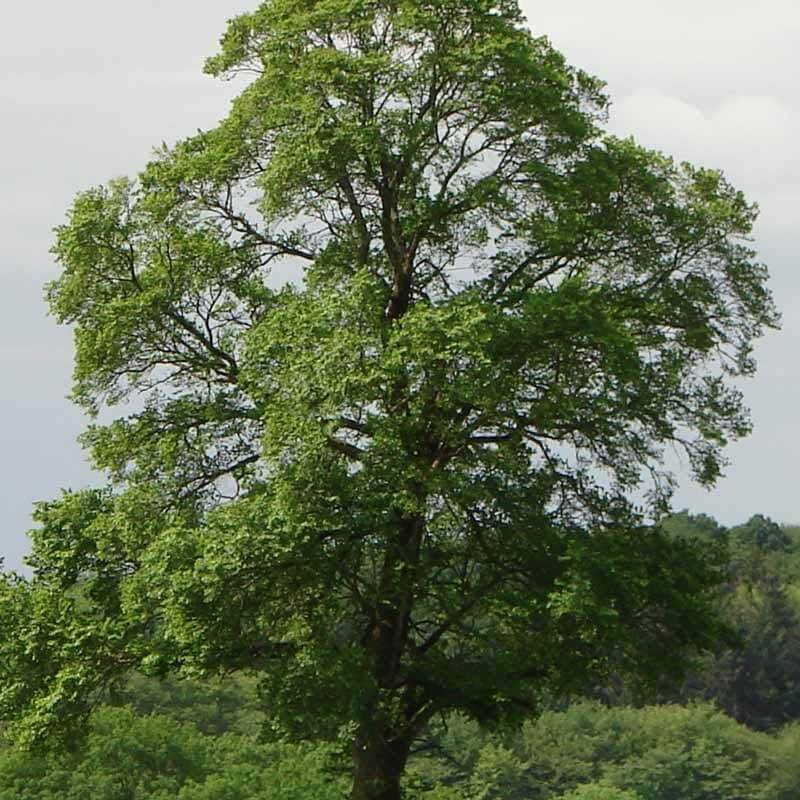
Also known as red elm, the Slippery Elm is native to eastern North America and adaptable to dry soils.
It’s a medium-sized tree, growing between 39 to 62 feet, identifiable by its broad, oblong leaves, which change from red to dark green.
The leaves can grow up to 12cm long, turning to dull yellow by summer’s end. The red tinge of the wood gives it its name.
Initially, the leaves are red in color, then they turn dark green, and by the end of the summer, you will notice a fall of dull yellow leaves.
7. Wych Elm (Ulmus Glabra)
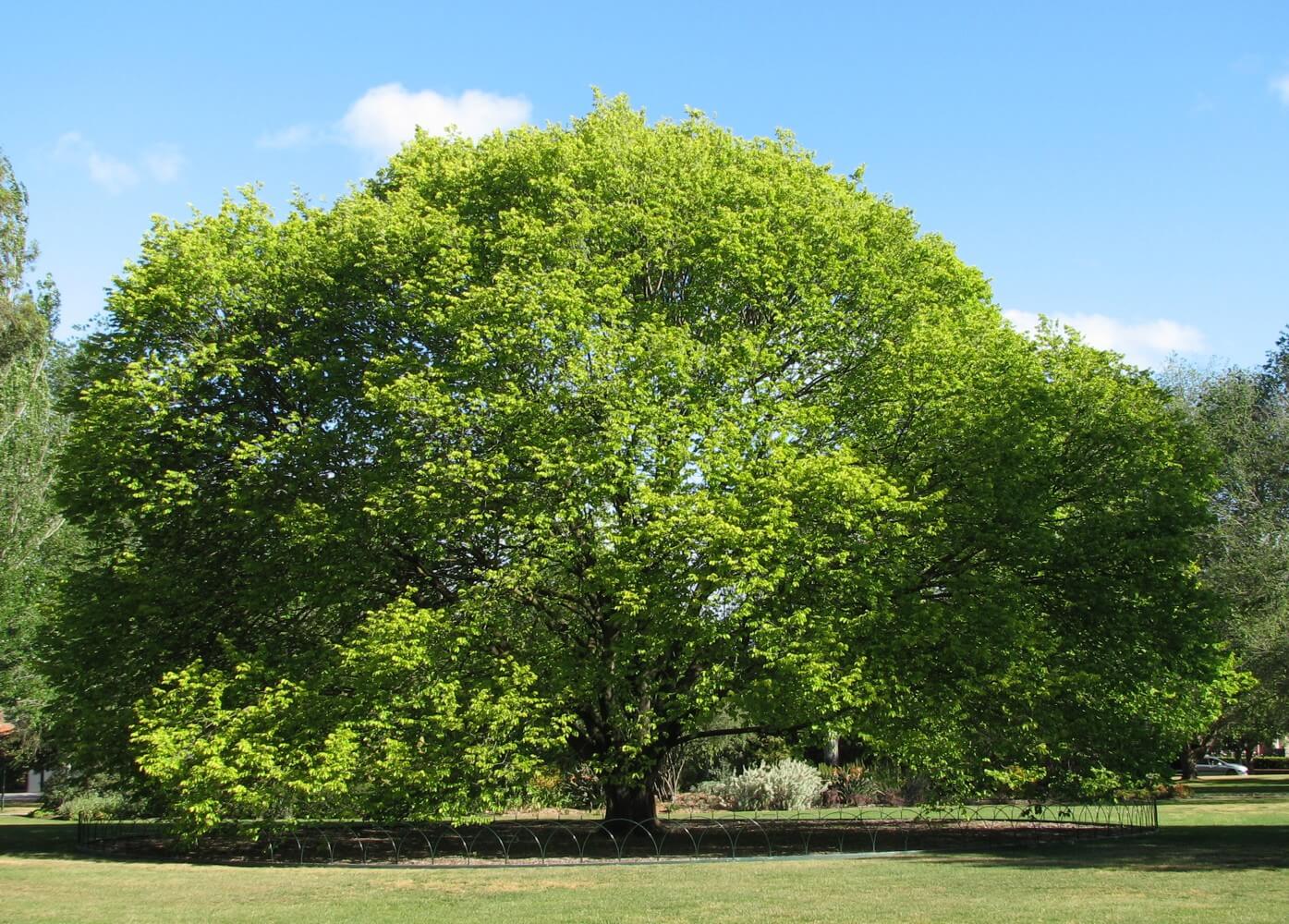
The Wych Elm, or Scots Elm, has the broadest range among elm species found from Europe to the Arctic Circle.
It grows at elevations up to 1500m and can reach 40m in height.
Unique in elm tree identification due to its seed-only reproduction method, the Wych Elm has tough, wingless leaves, oval and deciduous, growing up to 6-17cm long with a broadness of 3 to 12cm.
You can enjoy the scenery of hermaphrodite flowers right before the appearance of leaves in spring.
8. Rock Elm Tree (Ulmus Thomasii)
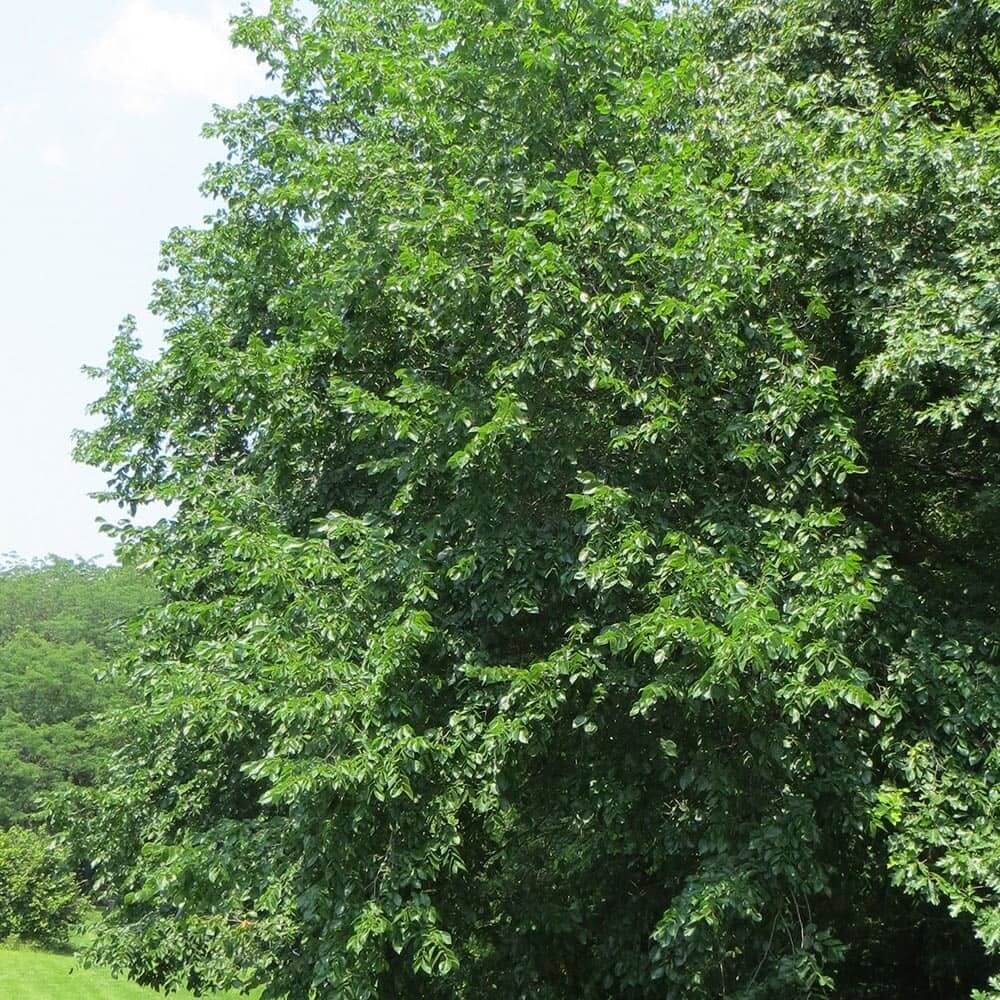
The Rock Elm, native to the Midwestern United States, grows between 50 to 100 feet and can live up to 300 years.
You can also find them in Ontario, Quebec, Kansas, and Minnesota.
It’s easily identifiable by its cylindrical crown and shorter, narrow leaves. The bark is grayish brown with scaly, flattened ridges.
Rock elm leaves are widely round and oval and can grow up to 5cm to 10cm with a symmetrical base and acuminate base.
Samaras are broad fruits with long, covered, fine hair maturing in May or June.
9. Camperdown Elm Tree (Ulmus Glabra ‘Camperdownii’)
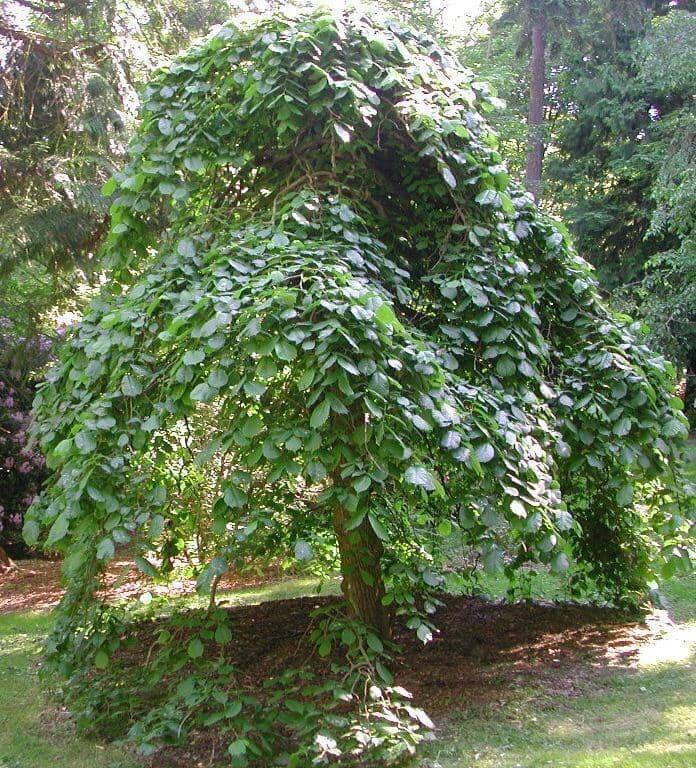
The Camperdown Elm, also known as the weeping or umbrella elm, is a unique species with its origins in Scotland.
Notable for its contorted branches and weeping habit, this elm is a distinctive elm identification feature.
Its thick, dense, dark green foliage and twisted root-like branches characterize the tree.
In spring, the Camperdown Elm is adorned with small, beautiful blossoms that cover the entire dome-shaped canopy.
Initially found in the forest at Camperdown house, this was replanted in the respective house. The original tree was growing 3m below the average height.
Another feature that makes this elm species different is that it has a contorted branch with a weeping habit.
10. Chinese Elm Tree (Ulmus Parvifolia)
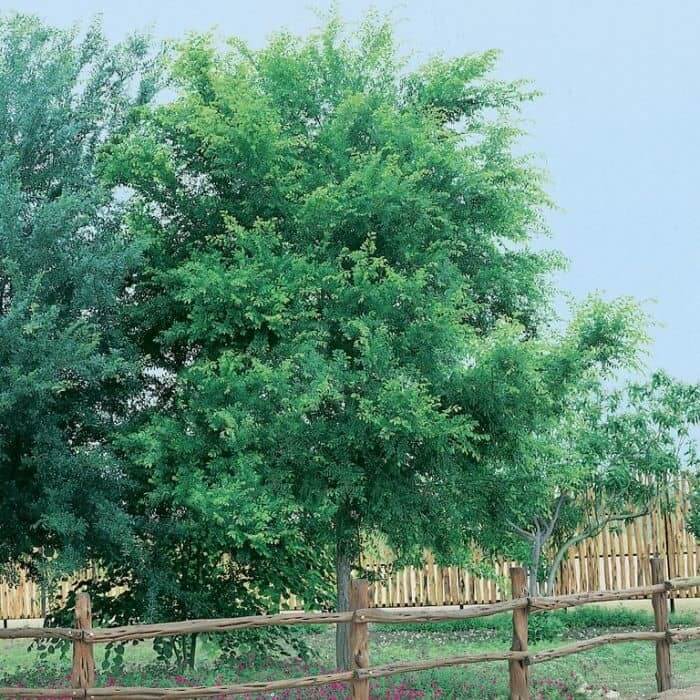
The Chinese Elm, or lacebark elm, is native to East Asia and renowned for its graceful stature.
A small to medium-sized semi-deciduous tree, it grows up to 59 feet and is easily identifiable by its tiny, dense leaves with a leathery texture.
The single-toothed leaves, ranging from 2 to 5 cm long, are sustainable, often remaining on the tree well into winter.
The tree also produces small, inconspicuous flowers in early autumn, known as apetalous.
These leaves are quite sustainable, as you will find them on the tree in late December and sometimes even January.
It has a distinctly handsome trunk and a flaking bark with grey and red tans, but it can become dangerous after the major branch is lost, giving canker-like wounds.
11. Siberian Elm Tree (Ulmus Pumila)
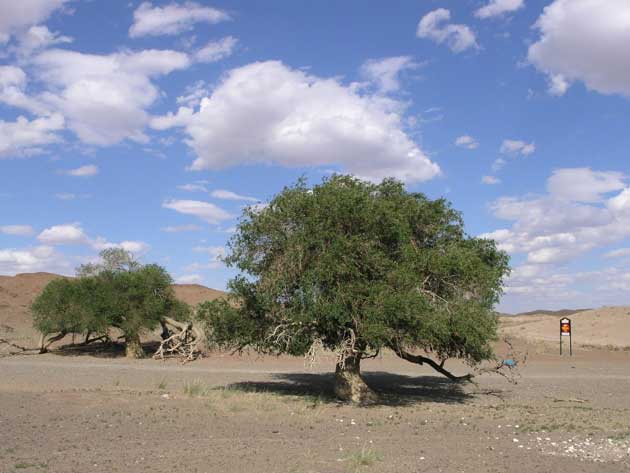
Often confused with the Chinese Elm, the Siberian Elm is known for its smaller stature, earning it the nickname “dwarf elm.”
Native to central Asia, it is widely cultivated in various parts of the world.
The Siberian Elm grows up to 25 meters tall, with elliptic leaves that turn from dark green to yellow in autumn.
Its bark is darkish gray, with irregular longitudinal patterns, making it a distinct species in elm tree identification.
12. Winged Elm Tree (Ulmus Alata)

The Winged Elm, found in the southeastern and south-central United States, is a small to medium-sized tree.
Its name derives from the thin, wing-like growths along its branches.
The leaves are bright green, oval, with jagged edges, turning bright yellow in summer.
This tree’s bark is dark brown with a gray tinge and rough ridges.
The Winged Elm tree is not taken very seriously as it is the least shade-tolerant and is readily available to invade the oil fields.
13. European White Elm Tree (Ulmus laevis)
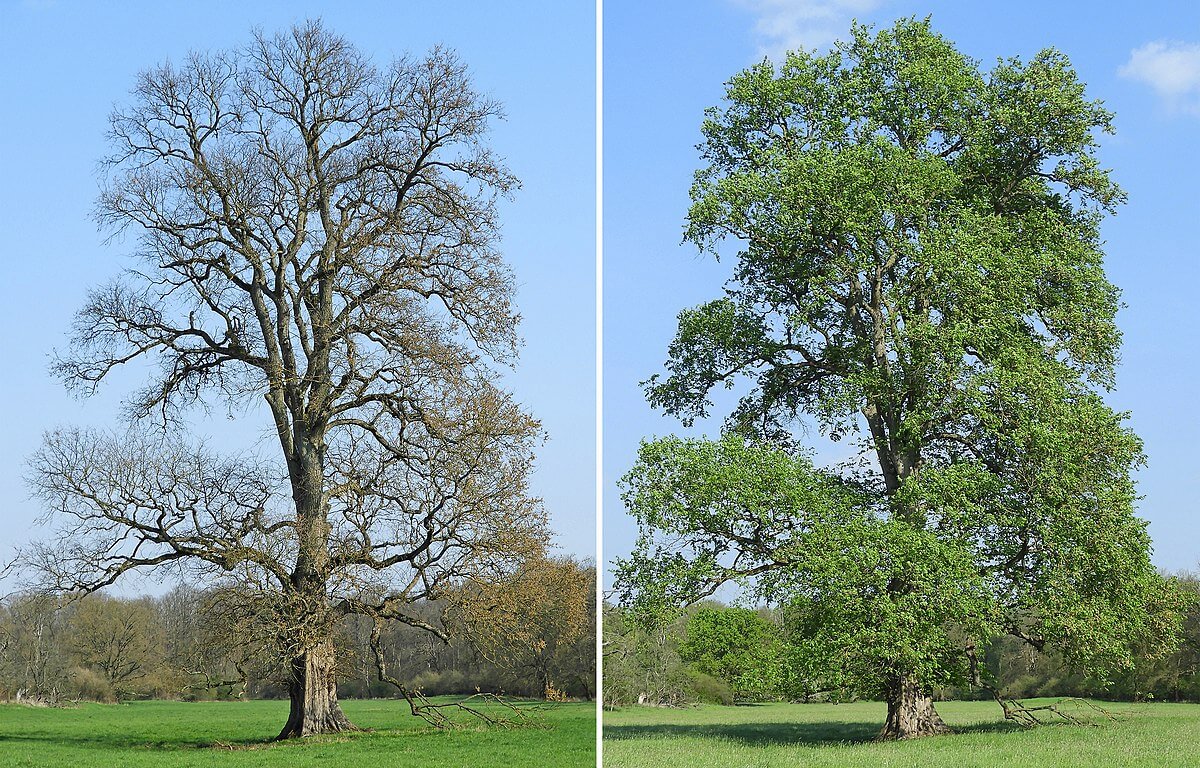
European white Elm is also known as fluttering elm, spreading elm, or stately elm, and in the United States, it is called Russian elm.
The native to this species is very evident as it lies in the name. They are very popular in Europe and France and are sometimes encountered at elevations above 400m.
These are fast-growing large deciduous trees with an open circular crown and can grow up to an average height of 30 to 35 m. White Elm leaves are glossy, deep green leaves that can grow 6 to 12 cm long.
The bark of this Elms is greenish-gray in color, which is initially very smooth but eventually becomes fissured.
14. Bosque Elm Tree (Ulmus Parvifolia ‘Bosque’)
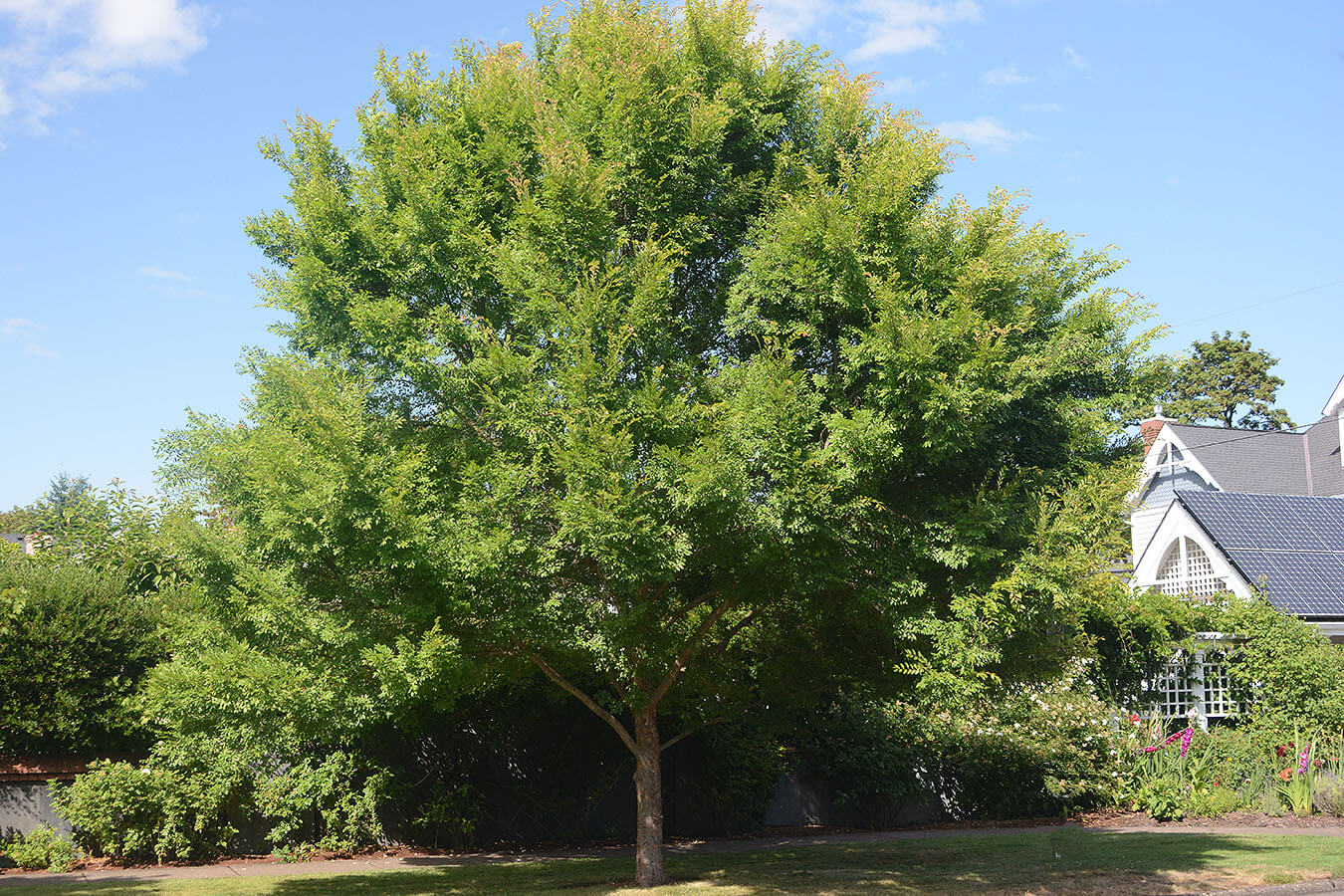
The Bosque Elm tree is a cultivator of the Chinese Elm tree. These elms are tall and graceful.
It also has an oval canopy with drooping branches. This tree is very popular for the residential landscape because it provides tremendous shade.
Bosque elm leaves are appealing because of their golden-red shade that can be seen during the falls.
It has peeling bark and is one of the fastest-growing trees. However, it can only grow up to 20 to 25 feet.
15. Field Elm Tree (Ulmus Minor)
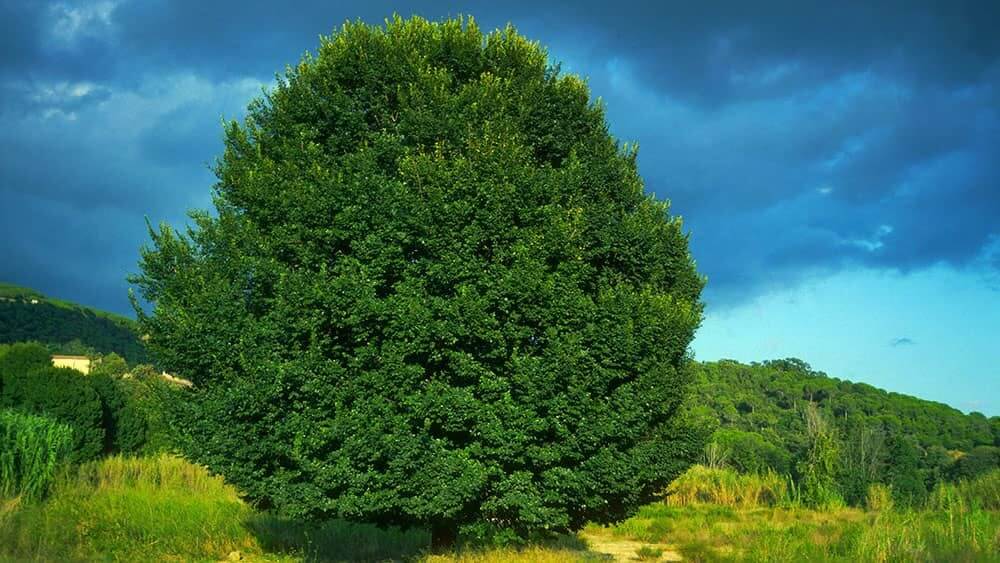
Native to southern Europe, the Field Elm is a robust species thriving in low-lying forests near rivers.
It’s known for reaching heights up to 100 feet, marked by its rough bark and a round crown that becomes more pronounced as it matures.
This elm is particularly resilient, often surviving even when afflicted by the notorious Dutch elm disease.
Its leaves, which start small, expand with the tree’s maturity, culminating in distinctive oval-shaped samaras.
The Field Elm is also notable for its adaptability to different soil types, and its ability to thrive in both flooded and dry conditions makes it an excellent choice for varied landscapes.
The tree’s long history in Europe has seen it used in traditional carpentry and as a landscape tree in parks and large gardens.
16. Japanese Elm Tree (Zelkova Serrata)
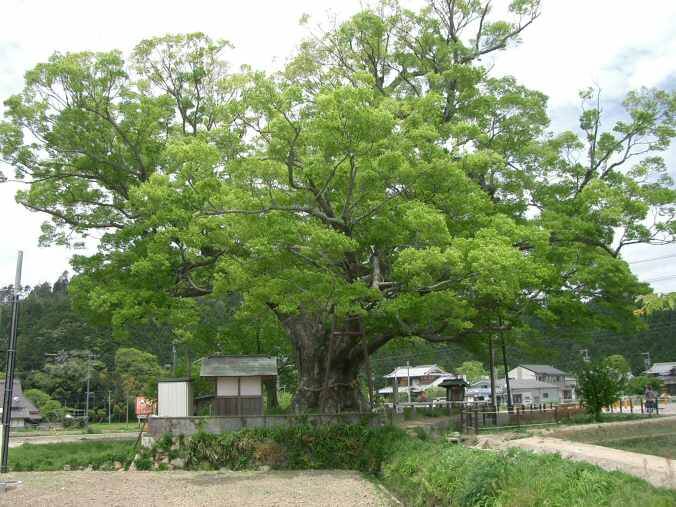
The Japanese Elm, or Zelkova Serrata, is a semi-deciduous tree renowned for its versatility and aesthetic appeal.
It can grow up to an impressive 98 feet and is characterized by a fast growth rate in its youth, which gradually slows as the tree matures.
The leaves of the Japanese Elm, measuring up to 5 cm in length, undergo a beautiful transformation from bright green in summer to a spectrum of yellows, oranges, and reds in autumn.
Its bark, known for its unique exfoliation pattern, reveals an attractive orange inner bark, adding to its visual interest.
This elm species is highly valued for its ornamental qualities in landscaping and urban planning, often seen in streetscapes and parks.
Additionally, its resistance to various diseases and pests makes it a resilient choice for challenging urban environments.
17. Mexican Elm Tree (Ulmus Mexicana)
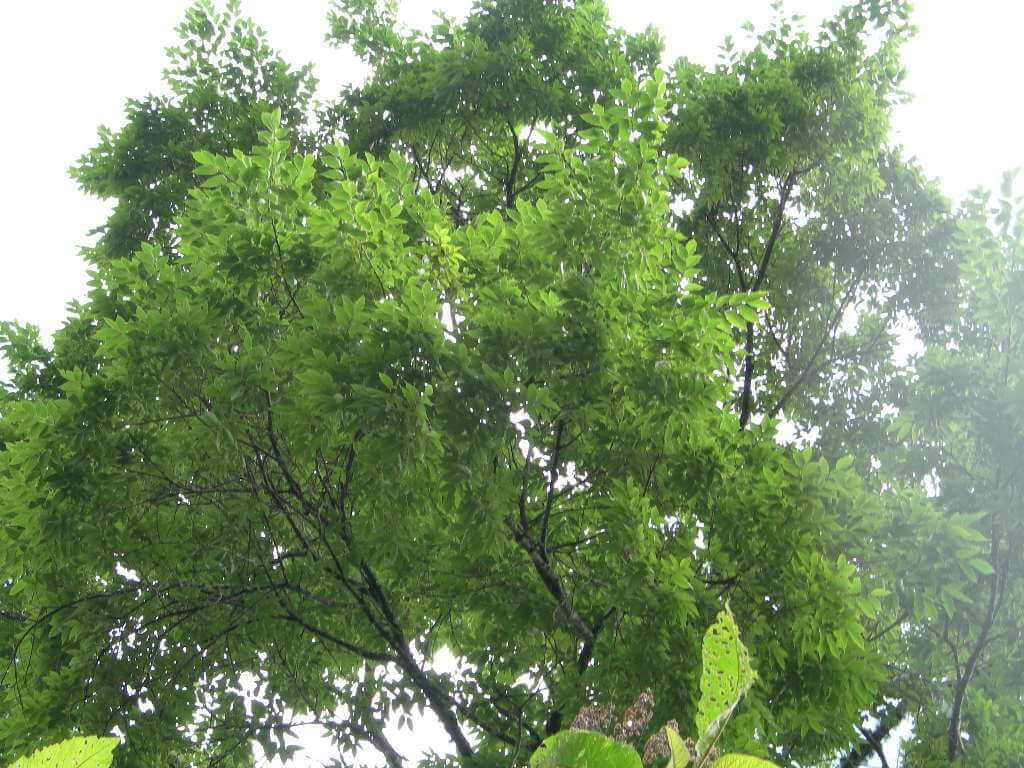
The Mexican Elm stands as a giant among elms, reaching astounding heights of up to 270 feet.
Predominantly found in the rainforests of Central America, this species boasts a sturdy grey trunk that supports a lush, deep crown.
The leaves, ranging from 5 to 10 mm in length, are a testament to the tree’s adaptability to the dense forest canopy.
The bark is grayish-brown with a distinctly furrowed texture, adding to its rugged appearance.
This elm is especially noteworthy for its role in tropical ecosystems, providing habitat and food for diverse wildlife.
Its impressive height also makes it a natural choice for creating dramatic landscape features, offering shade and structure in large-scale garden designs or public parks.
18. Large Fruited Elm
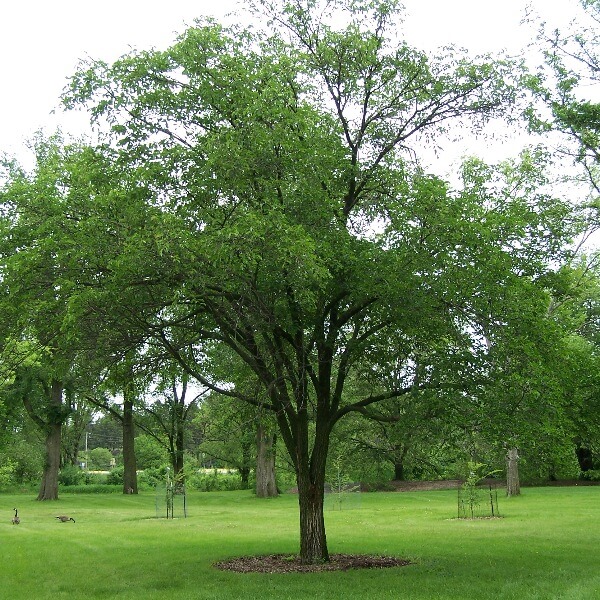
Named for its capacity to produce sizeable samaras, the Large Fruited Elm is a distinctive species native to the Far East.
This elm, capable of growing as either a deciduous tree or a shrub, reaches up to 55 feet tall.
It resembles the American Elm when young but remains notably shorter at maturity.
Its oval leaves, with a unique leathery texture, are essential for elm tree identification, especially noted for their landscaping appeal and resistance to Dutch elm disease.
This species is especially valued for its hardiness in extreme temperatures, making it a suitable choice for various climatic conditions.
The Large Fruited Elm is often sought for its ornamental value in landscape design, particularly in creating naturalistic settings.
Conclusion
In this comprehensive guide, we have journeyed through the diverse and fascinating world of elm trees, exploring various species and their unique characteristics.
Elm tree identification is not just an exercise in recognizing different species; it’s a deeper understanding of their individual traits, ecological roles, and historical significance.
From the majestic heights of the Mexican Elm to the resilience of the Wych Elm against Dutch elm disease, each species contributes uniquely to our landscapes and ecosystems.
As we’ve seen, elm tree identification involves examining specific features such as leaf shape, bark texture, tree height, and the presence of distinctive samaras.
These elements not only aid in identifying various elm species but also highlight the incredible diversity within the Ulmus genus.
Understanding these characteristics is crucial for gardeners, landscapers, ecologists, and tree enthusiasts alike.
This offers insights into selecting the right elm tree for a specific environment or appreciating its natural beauty in wild settings.
As you encounter these splendid trees in forests, parks, or urban landscapes, remember the unique stories and qualities each elm species holds.

